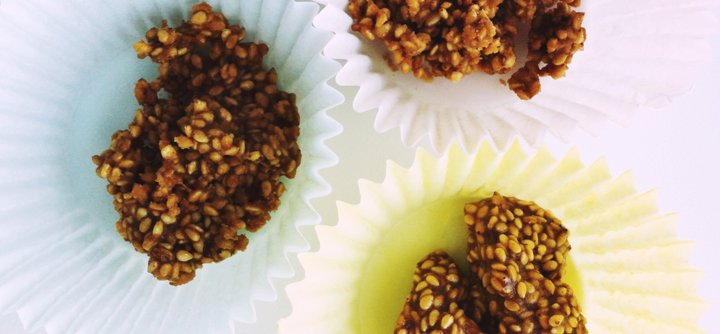
“Getting directions from colored cooks is rather like trying to write down the music to the spirituals which they sing—for all good old-timers (and new-timers too, for that matter) cook ‘by ear,’ and it is hard to bring them down to earth when they begin to improvise. They are not only very bad on detail, with their vague suggestions of ‘a little of dis and a little of dat,’ but ... they invariably add a few superfluous embellishments, by way of making them sound more imposing for ‘company.’”—Forward, The Savannah Cook Book
Of course I chose The Savannah Cook Book based on its cover. How many books in Crerar Library have an illustration of a black mammy on the cover?
My guess is just one.
Originally published in 1933, The Savannah Cook Book was written by Harriet Ross Colquitt, with a light-verse introduction by Ogden Nash, who lived briefly in Savannah as a child (“For as everybody knows, life on Savannah victuals / Is just one long round of Madeira and skictuals ...”). The “colored” cooks whom Colquitt consulted are not named.
Perhaps I spent too long in grad school in the humanities (only a year, and that was plenty) but I found it impossible to see the cooks’ noncompliance as anything but a form of quiet resistance. When Colquitt asked one cook how long she cooked her okra, “she replied that she put it on when did the rice.” And how long did she steam the rice? “‘Till dinner’s ready,’ responded this wizard of the kitchen, and left me just where I was when I started.”
You might imagine this book—with its questionable artwork and its simultaneously respectful and condescending attitude toward African American culinary skills—would have been out of print for a long, long time.
And you would be wrong. It remained in print throughout the civil rights era and into the black power era; the eighth edition, still with the mammy figure but with a hungry black cat added, was published in 1974 and reissued in 2011. It’s one of the few Crerar cookbooks that can be purchased online, cheaply and easily.
There are simple recipes here for Low Country favorites that are still enjoyed today: biscuits, black bean soup, spoon bread, grits (with an interesting usage change: “It’s grist before it is cooked,” Colquitt writes, “and hominy afterwards.”) as well as historical remnants: terrapin stew, turtle eggs, possum and taters.
Just one recipe (or “receipt,” in Colquitt’s terminology) explicitly acknowledges its diasporic origins: benné candy. Benné, Colquitt explains, “is an East Indian herb, called sesame in the Orient. ... The slaves brought it to this country from Africa, and it is to be found today in many of the negroes’ gardens.” So, as a small gesture of respect to generations of forgotten African American cooks, that’s the recipe I decided to make.
Ingredients
1 pound brown sugar
small lump of butter (about 2 tbs)
½ cup milk
1 tbs vinegar
1½ cups benné seed, toasted
1 tsp vanilla
Boil together the brown sugar, butter, milk, and vinegar. When beginning to thread, take off stove and beat in the benné seed. Add one teaspoon of vanilla and beat until creamy. Drop a teaspoon at a time on a buttered dish or paper and let cool.
Paula Deen’s version of this recipe, Uncle Bubba’s Benne Candy, is nearly identical, but it helpfully specifies the amount of butter and the temperature the syrup should be—265 to 285 degrees F—when it’s done. (Since I had never made candy before and didn’t immediately know that “threading” refers to the syrup’s behavior when dropped in cold water, a candy thermometer was indispensable.)
I thought the candy was just OK, nothing special. I brought it into work and asked my colleagues to tell me what they thought.
One aptly described it as peanut brittle but with sesame seeds.
Two others were reminded of an Asian candy they were familiar with, but not that fond of.
And one said she enjoyed it at first, kind of, except for its “brown sugar bitterness.” She would eat it again if someone else made it, “but would end up feeling sick.”
